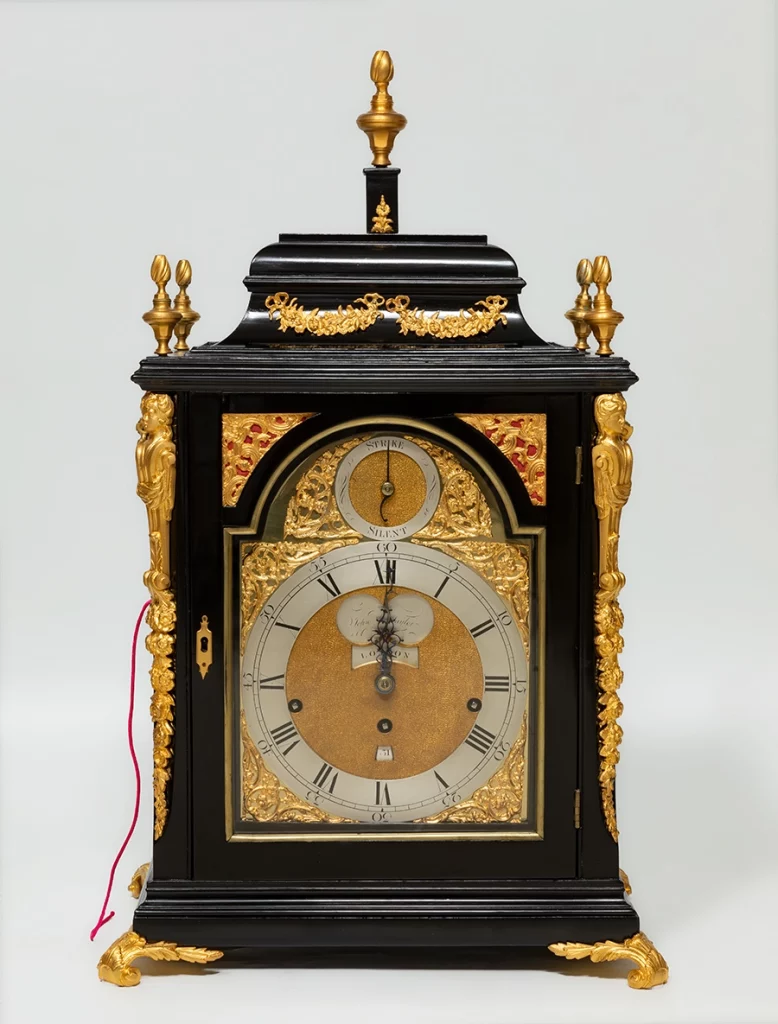Table clocks are considered one of the most iconic pieces in the field of decorative arts. Although their main function is to measure time, these objects transcend the utilitarian and become essential elements in the decoration of homes. Throughout history, they reflect technological advances, cultural changes and, above all, the development of the bourgeois middle class and the European aristocracy. In the 19th century, these clocks reached their peak of splendor, especially in the homes of the bourgeoisie. Today, they are still admired not only for their precision, but also for their artistic beauty.
Clocks as symbols of power and sophistication
During the Middle Ages, monasteries developed the first mechanisms for measuring time. This was due to the need to organize the daily routine and establish a rhythm between prayers. It was in this context that the first steps were taken towards the invention of mechanical clocks. However, it was not until Modernity that these devices were transformed from functional tools to symbols of status and economic power.
From the 17th century onwards, the manufacture of clocks became industrialized, especially in countries such as France, Germany, Switzerland and England. Each of these countries specialized in different aspects of watchmaking, which allowed different versions of these objects to emerge. Table clocks of the time, in addition to being practical items, also functioned as luxury pieces that showcased the growing wealth of their owners. Over time, table clocks became an indispensable component of home decoration, playing a fundamental role in the decorative arts.
English table clocks: a masterpiece of mechanical precision


In England, watchmakers excelled in the manufacture of high-precision machines. English clocks focused on the solidity of the machinery, which was often protected by thick bronze plates. These bracket clocks were highly valued for their durability and the quality of their internal mechanism. In addition, many of them had a cord that, when pulled, activated a mechanism that rang a bell. This made it possible to know the time without having to light a candle, which added a touch of sophistication to the home.
This type of English clock was usually placed at the head of the bed, which allowed the owners to know the time during the night without the need to get up. The importance of these clocks lay not only in their usefulness, but also in their role as elements of distinction. A well-crafted English table clock reflected the refined taste of its owner, thus contributing to the decorative ambience of the room.
French table clocks: the fusion of simplicity and beauty


On the other hand, the French clock stood out not only because of its performance, but also for its extraordinary aesthetics. Although the machinery was simpler compared to that of English clocks, its appeal lay in the virtuosity of the bronze craftsmen. These cases not only had a protective function, but also became true works of art. French clocks were decorated with elaborate gilding, vibrant enamels and precious stones that not only embellished the object, but also enhanced its value.
The case of a French clock was often worked by expert bronze craftsmen who applied gilding techniques with mercury amalgam, creating shiny surfaces that reflected light in an impressive way. In addition, enamels gave color and life to the compositions, while hard stones, such as marble and lapis lazuli, further elevated their status. In many cases, bronze artists signed their works, underscoring the importance of their contribution to the design and manufacture of the watch.
The clock as a centerpiece in the decorative arts
Table clocks, both of English and French origin, played a fundamental role in the evolution of the decorative arts. They were not only functional objects, but also reflected the lifestyle, technological advances and artistic trends of their time. As clocks were perfected, their role in home decoration was consolidated. Clocks became key pieces in the ornamentation of rooms, becoming an essential part of the aesthetics of the homes of the bourgeoisie and aristocracy.
In addition, the mass production of watches from the eighteenth century onwards allowed these pieces, previously only accessible to the elite, to reach a larger part of the population. Over time, table clocks were democratized, but always maintained their role as symbols of sophistication and luxury. Although today’s clocks no longer have the same cultural and decorative relevance as in the past, they remain a testament to the development of the decorative arts and the history of design.
By looking at a table clock, we can travel back in time and see how the decorative arts have played a crucial role in the design of our homes. In addition, clocks are an excellent starting point for collectors, who can find unique and valuable pieces. It is always advisable to purchase them from renowned sites such as Setdart, where our experts can provide detailed information about each piece, ensuring a safe and enriching purchase for any watch lover.



